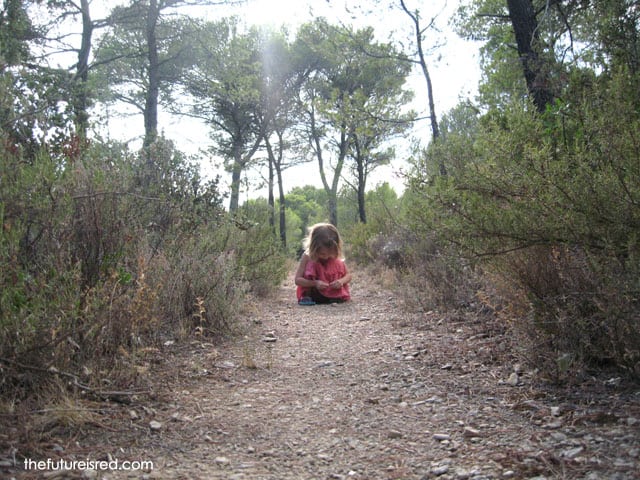When How not to write like Elizabeth Gilbert published a few weeks ago, I couldn’t get myself to read it. The title offers a judgmental parsing of literary value, and I just don’t have the energy for it. I’d rather write than sit around discussing what kind of writer is the right kind of writer.
Finally, last week, when my Barnard college friend Susanna — a writer and editor I infinitely respect — asked me what I thought of it, I stopped to read. The opening was as expected.
It is a risk, becoming Elizabeth Gilbert. Not the international fame and money and showing up inexplicably and briefly on Project Runway All Stars. I mean being an obnoxious white lady in brown places….
Of course the counterreaction was immediate. Jessa Crispin is pretentious. She’s a traitor to women. Yep. Traitor. She’s just plain wrong. And while some of that criticism may be true, overall, I found myself agreeing with her.
My main take away from the article: Women need to expand beyond personal essay and feelings-based writing to include a more comprehensive descriptive of our experience. When we identify mainly as Women Writers, we buy into a polemic that isolates us.
A second take away: The Traditional White Male writer – looking at you Bruce Chatwin and Richard Francis Burton – is also too self-focused but in a different way. He sees himself as the conduit for and translator of other cultures and places. TWM provides truth. His lens shines light on The Other, making it palatable to a white male readership.
“It gives a person the icks, and it unconsciously echoes so much literature written by missionaries, here on this island to save the savages if only they would allow it,” says Crispin about Gilbert. And yes, when you think of Eat Pray Love in the tradition of the TWM, it does.
This is not a new dialogue for Crispin.

Look at other articles she’s written. Or the topics she posts on her Book Slut website. She consistently promotes writing that breaks barriers between types while validating the experiences of those we often don’t see as works of art.
Yet in her Boston Review article, Crispin separates, divides and interprets the various female writers, separating them into type and creating her own hierarchy.
There is Elizabeth Gilbert. There are the writers who aren’t obnoxious white women. There is Bruce Chatwin and his ilk. Then there are women like Freya Stark who copy men’s travel writing. Isabella Bird is not deeply in touch with her feelings. Cheryl Strayed is too emotional and caught up with herself to really portray an adequate travel experience.
So what then is real travel writing?
I wish I had an answer for you. I tend be rather wide in my definitions of writing forms. I suppose that’s why Crispin’s call to break the traditional molds of white and male appeals to me. I see things even more broadly than she does.
I’ve taught writing for more than twenty years, often to students who have their whole lives been told their words and opinions mean nothing. Tell a writer that you value her experiences, and you free her to say something meaningful. Categorization clams many a writer’s soul.
What is a writer? Simple. Anyone who writes.
It’s a bit more complicated to define a real travel writer.
Does a guide book of where to eat and stay count? A blog post of 50 types of people you’ll meet in hostels? Is it Karl Ove Knausgaard’s trek across the United States? (Which one could say is entirely inner dialogue and shows very little of what I suspect he actually saw in his travels. I’m sure most still call it travel writing.)
The first are mainly informational. Are they writing or simply sharing information? The second, well, this Salon article sums it up nicely:
Knausgaard—provocatively low-affect, as if he’d wrought his prose from some insight-resistant material—is a master at arranging banal facts in a row and letting you wonder: Is this boredom I feel?
But Pam Mandel’s Sleeping Through the War? Or Eileen Smith’s finding a souvenir in Madrid. Or Jodi Ettenberg’s Japan in 77 photos. Or Flora Baker’s recent winning Thailand entry to National Geographic’s travel writing contest. Or the wonderful Asha Rajan’s musing on home.
All different, but yes, I call them travel writing.
I suppose one must first decide what is real travel. Is it going to the Dominican Republic to stay in a resort, maybe venturing out once for a tour of a sugar plantation? Is it spending a year in a place, getting to know people, the local market, learning to speak the language? Is it both?
My own first travel writing told the tale of a road trip across the United States during the blizzard of 1995. Me, my best friend Jen and the most base knowledge of how to change a tired drove the northern route from New York to South Dakota then turned south on a quest to learn as much about Native American culture as possible.
We slid off the road into a snow bank in Ohio where a blond lady trouper answered our CB radioed call for rescue. It was my first time driving in snow, my first time locked in the back of a squad car. They are impossible to escape. We spent New Year’s eve at a pow wow on the Pine Ridge reservation in South Dakota and crossed the border into Mexico by foot where we bought chiclets from an insistent little girl in a neon lime dress with yellow flowers.
Looking back, she was perhaps about Lila’s age.
Each event underscored the intense reality that I was out of my depth. I did not belong. I was the other in each place we visited, and it is from that viewpoint I wrote.
The discomfort I felt then I now actively seek.

I want the same when it comes to travel reading. I don’t want to feel comfortable. The same old, same old has excluded women and people of color from the cannon for years. Instead, show me something new, something I’ve never seen before.
So, is Elizabeth Gilbert a real travel writer?
I say yes. So what if it’s more introspective than outward description?
A la Virginia Woolf’s A Room of One’s Own, women have not traditionally owned rich resources on which to draw their art. Men go into business, make money, dine well and thus have the space to explore and write. Women are too busy having thirteen children.
The four walls within our heads remain the only place uncolonized by the outside world. It only makes sense that we’d turn inward for expression.
While I didn’t adore Eat Pray Love, there are two bits that have resolutely stuck with me.
The first, when Gilbert goes to Napoli for pizza. There, sitting in the best pizza country in the best pizza city in the best pizza restaurant in the world, she uncovers the holy of holy of pizza. Oh, how I long for that pizza, to feel its crust crunch in my mouth, to know the light oregano of sauce and to sit beneath an Italian sun.
It’s the singularity in this moment that gets me!
The second: Gilbert meets a healer in Bali. He very much represents one of the brown people that Crispin understandably finds so horribly inauthentic. What struck me? This man, he is never alone. His role in life is to be there when others need him.
I read this book when Lila was four years old, and between pregnancy, breastfeeding and a small creature banging on the bathroom door demanding entry, I had not been alone in almost five years. My body and time were not my own, and it was suffocating me.
Eat Pray Love reframed the concept of “alone time.” Solitude, while considered a human right in the United States, is a given and can even be considered bizarre by other cultures. That understanding helped me find peace in my reality. Alone time, like condensed milk in my coffee and a third pillow on my bed, might be oh-very-nice, but I can live without it.
And my experience as a woman and mother shape my travel and writing.

When I travel, I do not meet natives with bows and arrows. I do not face danger. I do not walk unburdened by backpack or other material possessions into the mountains with nary a thought of my survival.
No. I plan and protect.
My travel stories are not full of derring do — unless you consider simply traveling with two children to be brave. My stories reflect the tedium of daily life with a child. How does one go to the bathroom on an eighteen hour bus to La Paz when the driver won’t stop? What do you say when refused entry to a monkey refuge because they don’t allow children? What’s the difference between visiting a city with a child and visiting an island in Panama?
I see travel through the wants and needs of my children.
Lila asks a million questions. How did that mountain form with all those colors? Why is that woman wearing that? What do they eat for breakfast in Bolivia? Can I climb that?
Charlie finds adventure in the most mundane object. A ball. A leaf. A flower. He wants to suck them all into his mouth and devour them. Taking steps. The gat who knocks at the window every morning waking him, and the fireworks in the skies of Brooklyn on July Fourth. “Wow! Wow! Wow! What the hell is that?”
Thus, I see for the first time again.
I’ll happily while away an hour in the supermarket reading labels. What do people eat here? “How do you say…?” I learn to speak. “How much is this?” I learn my numbers. I learn the very basics of conversation and daily habit.
This is travel.
So much do I relish this brand of exploration that I chose to become an expat. The language is not my first language. The food in no way resembles my mother’s. The custom not my own. There are pieces, shadows that reflect what is natural to me, but on the whole, I am always at least slightly uncomfortable. I may never truly fit in.
This is my travel.
Show me a world that tugs at what I know, one that reflects a piece of myself, yet simultaneously throws me off balance so I am forced to see what I thought I knew at least a bit differently. This is what I want in my travel writing.
How do you define a real travel writer and who are your favorite writers?

